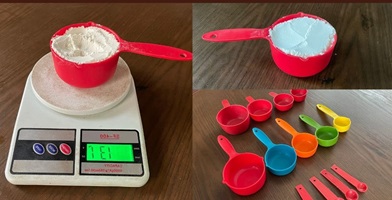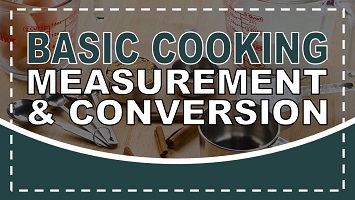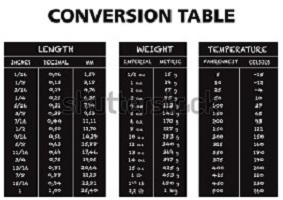Cup to Gram Measurements: The Ultimate Conversion Guide
Cup to Gram Measurements: The Ultimate Conversion Guide

Because cups measure volume and grams measure weight, converting between the two isn’t always straightforward; it depends on the ingredient’s density.
This guide explains cup-to-gram measurements for common ingredients like flour and sugar, helping you achieve perfect results every time.
Cup to Gram Measurements
1 Cup of Flour in Grams
A cup of all-purpose flour typically weighs 120 grams. If the flour is sifted, it’s lighter—around 110 grams. The reason for this difference is that when flour is packed tightly, more fits into the cup, making it heavier. Always remember to spoon and level your flour instead of scooping directly from the bag. This ensures a more accurate measurement and avoids dense or dry baked goods.
1 Cup of Sugar in Grams
Sugar is denser than flour, so one cup of granulated sugar weighs 200 grams. If you’re using icing (powdered) sugar, one cup equals 100 grams, while brown sugar (packed) is slightly heavier at around 220 grams per cup. This variation matters greatly in baking, as too much sugar can alter texture, moisture, and sweetness levels.
1/4 Cup to Grams
A ¼ cup is a small but common measurement in many recipes. Depending on what you’re measuring:
- Flour: 30 grams
- Sugar: 50 grams
- Butter: 57 grams
This fraction of a cup is useful for scaling down recipes or measuring small ingredient quantities.
1/2 Cup to Grams
Half a cup, or ½ cup, equals:
- Flour: 60 grams
- Sugar: 100 grams
- Butter: 113 grams
These conversions are essential when doubling or halving recipes, as precision ensures your dish turns out exactly as intended.
1/2 Cup Sugar in Grams
½ cup of sugar equals 100 grams. If you are using powdered sugar, the same amount would be 50 grams. Because sugar granules are compact and uniform, this conversion is relatively consistent, making it easier to substitute in recipes.
1/4 Cup Sugar in Grams
¼ cup of granulated sugar equals 50 grams. For powdered sugar, it’s about 25 grams. Measuring smaller amounts correctly can make a big difference in desserts or glazes where sugar plays a major role in both flavor and texture.
1/3 Cup in Grams
One-third of a cup is a little trickier but just as important:
- Flour: 40 grams
- Sugar: 65 grams
- Butter: 76 grams
This measurement is often used in cookie, muffin, and pancake recipes. Always level off the ingredient for the most reliable conversion.
100 Grams to Cups
If your recipe lists grams but you only have measuring cups, here’s how to translate 100 grams:
- Flour: ≈ ¾ cup
- Sugar: ≈ ½ cup
- Butter: ≈ ⅓ cup
Because ingredients have different densities, 100 grams will occupy different volumes depending on what you’re measuring.
Cup to Gram Measurements FAQs
What is 1 cup in grams?
According to the metric system, 1 cup equals approximately 250 grams. However, this only applies to water or liquids with similar density. For dry ingredients like flour or sugar, the conversion changes. Always check the specific ingredient’s density for accurate results.
How many grams are in a cup?
It depends on the ingredient:
- Water: 250g
- Flour: 120g
- Sugar: 200g
- Butter: 227g
The type of ingredient determines the exact conversion since weight and volume are not the same thing.
Is 250g of flour 1 cup?
No. 250 grams of flour equals about 2 cups. A cup of flour typically weighs only 120 grams. Since flour is lighter and fluffier than water, you’ll need more cups to reach the same weight in grams.
What is ½ cup in grams?
Here’s a quick reference from a conversion table:
- Flour: 60g
- Sieved Flour: 55g
- Sugar: 100g
- Icing Sugar: 50g
Is 1 cup equal to 100g?
Not usually. One cup of any ingredient rarely equals 100 grams. For instance, 1 cup of sugar is about 200g, and 1 cup of flour is 120g. Always use a conversion chart for accuracy.
Is 1 cup of flour 100 grams?
A cup of all-purpose flour weighs about 120 grams, not 100g. Using 100g instead of 120g can result in overly wet or dense batters, especially in baking recipes where precision matters.
How much is 500g of flour in cups?
Since 1 cup of flour weighs 120 grams, 500 grams equals roughly 4⅙ cups.
How much is 200g of flour in cups?
200 grams of flour equals 1.6 cups, while 200 grams of sugar equals 1 cup. Butter, being denser, converts differently—200 grams of butter equals about 0.88 cup.
How to measure 1 cup?
In liquid form, 1 cup equals 8 fluid ounces or 236 grams of water. Use a measuring cup designed for liquids and fill it to the line for accurate results. For dry ingredients, use a dry measuring cup and level off the top with a precision knife.

Final Thoughts on Cup to Gram Measurements
Understanding cup-to-gram conversions can transform your cooking and baking accuracy. Whether you’re making bread, cakes, or sauces, these measurements ensure consistency and quality in every dish.
Keep a conversion chart handy, and when in doubt, use a kitchen scale for the most precise results.


